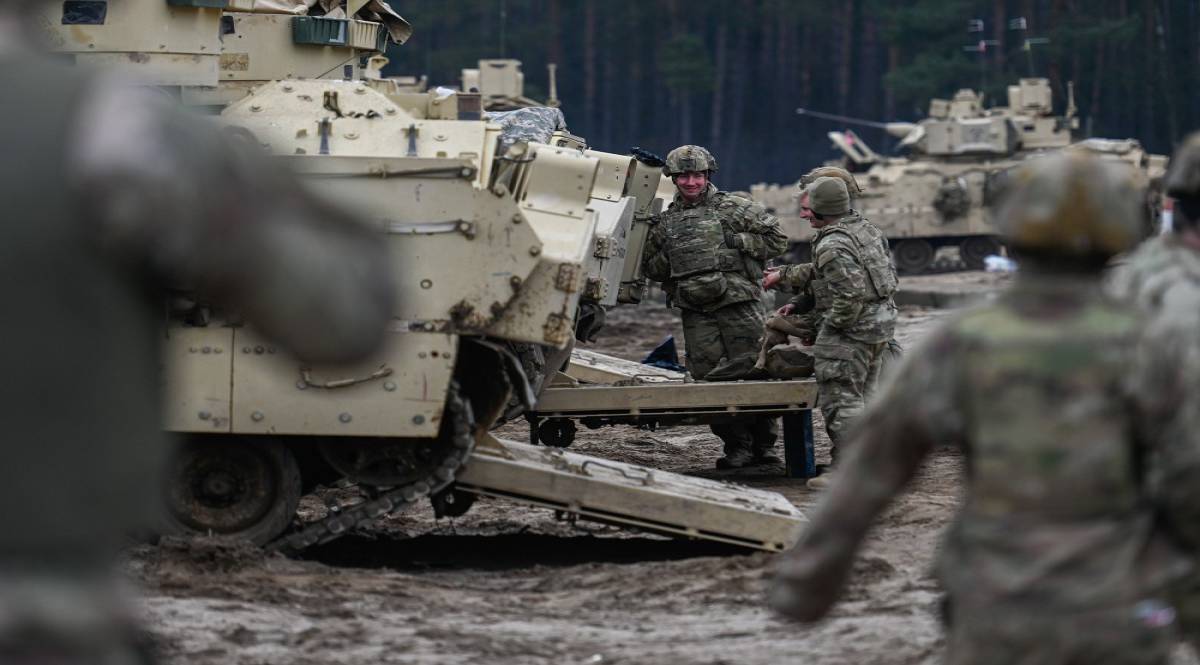1840 Views
America’s Great Retreat: How U.S. Troop Withdrawals Expose a Collapsing World Order
In a rapidly transforming global order, the United States is reevaluating its military strategy. In 2025, it is set to reduce its military presence in Europe and shift focus toward emerging threats, particularly in the Asia-Pacific region. This shift not only reflects changes in global power dynamics but also carries significant implications for global security, NATO, and transatlantic relations.
For decades, the U.S. has acted as the "global policeman." Now, it's drawing down forces in Europe. According to reports, the Pentagon is considering a plan to withdraw up to 10,000 troops from Eastern Europe—part of the 80,000 U.S. forces stationed across the continent under the U.S. European Command (EUCOM). These troops include 20,000 personnel deployed in 2022 by the Biden administration to bolster the defense of countries bordering Ukraine following Russia’s invasion.
This proposed drawdown—potentially affecting countries such as Romania and Poland—is viewed as a sign of America’s waning hegemony and the end of Washington’s traditional role as the guardian of global order. It stems from budgetary constraints, a need to prioritize emerging threats (particularly China), and a broader strategic reassessment.
Such developments underscore the inefficacy of America’s dominance-oriented strategy, marred by failures in West Asia and continued challenges in Ukraine. The military scale-back in Europe highlights not only the limits of U.S. power but also signals a move away from a unipolar world toward a more multipolar and equitable global order.
Europe’s Defensive Westernism at a Crossroads
In response to a possible U.S. military reduction, European countries are bolstering their own defense capabilities. At a recent NATO summit, member states pledged to raise defense spending to 5% of their GDP by 2035—3.5% for core military expenses (e.g., weapons and personnel) and 1.5% for defense-related investments such as cybersecurity and infrastructure.
This decision reflects a growing skepticism toward transatlantic security guarantees, especially amid uncertainty over America’s commitment to Europe. NATO Secretary-General Mark Rutte emphasized that the budget increase was vital due to Russia’s escalating threat and the need to reinforce NATO’s deterrence capabilities. However, some nations, including Spain, declined to commit to this target—Prime Minister Pedro Sánchez called the proposal "unreasonable."
A rise in European defense spending could foster greater autonomy from NATO and the U.S. It also marks a strategic pivot toward investing in new technologies and regional security cooperation—steps toward a more balanced, multipolar world order. These changes suggest the necessity of European defense self-reliance in the face of regional threats, without relying on external intervention.
America’s Waning Capacity
The U.S. focus on confronting China and emerging threats reflects its diminishing ability to manage multiple military fronts simultaneously. Since the Obama administration’s 2011 "Pivot to Asia" strategy, the U.S. has sought to expand its footprint in the Asia-Pacific. By 2025, this focus has intensified, especially in response to China's rapid military advancements—particularly in anti-access/area denial (A2/AD) capabilities that now threaten key American assets in the region.
U.S. strategy in Asia increasingly involves asymmetric tactics—such as unmanned systems and AI-based technologies—to counter China’s growing advantages. Additionally, the U.S. is reinforcing alliances with countries like Japan, Australia, and India to strengthen regional security architecture.
This pivot highlights the erosion of America's global military capacity. Calls for a resolution to the war in Ukraine—to redirect resources toward Asia—demonstrate Washington’s stretched defense posture. The U.S. can no longer maintain hegemonic dominance across multiple theaters at once.
NATO’s Rearrangement
As the world’s most powerful military alliance, NATO is adapting to the likely reduction in U.S. presence and rising external threats, especially from Russia. The commitment to raise defense spending to 5% of GDP by 2035 illustrates Europe’s attempt to enhance its capabilities and lessen dependence on the U.S. These efforts include investment in cutting-edge technologies like cybersecurity and unmanned systems, as well as deepening transatlantic defense cooperation.
Yet, some experts argue these measures may only amount to a superficial overhaul of an outdated structure. NATO faces crises of legitimacy and effectiveness in tackling modern threats. For instance, its 2025 summit statement lacked a clear condemnation of Russia’s aggression in Ukraine—unlike previous years—highlighting internal divisions.
A reduced American presence could also weaken NATO’s deterrent power. Nevertheless, the alliance remains committed to supporting Ukraine and has incorporated direct aid into members’ defense expenditure calculations—an effort to maintain unity in the face of threats. NATO’s future will depend on its members’ ability to manage change and strike a balance between transatlantic cooperation and European strategic autonomy.
Conclusion
Recent shifts in U.S. military strategy—especially the drawdown in Europe and renewed focus on Asia—signal profound changes in global power dynamics. The decline of American hegemony, the push for European defense independence, and America’s overstretched capabilities all point toward the emergence of a more multipolar and just international order.
While NATO adapts to this new environment, its future hinges on how well the U.S. and Europe can balance cooperation with growing demands for strategic self-sufficiency. These shifts carry implications not only for regional security without foreign intervention, but also for the broader failure of U.S. dominance strategies—and the necessity of defense self-reliance among other nations.
Ultimately, the path ahead requires a delicate balance between preserving traditional alliances and adapting to new strategic imperatives.
*Translated by Ashraf Hemmati from the original Persian article written by Mohammad Mahdi Esmaeil Khanian

Comment
Post a comment for this article